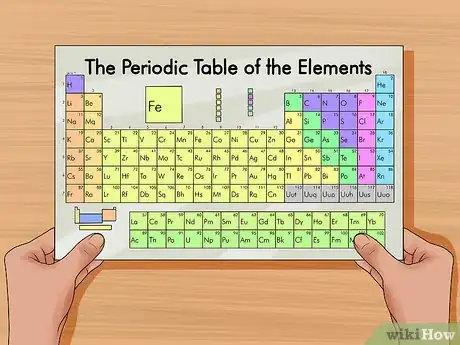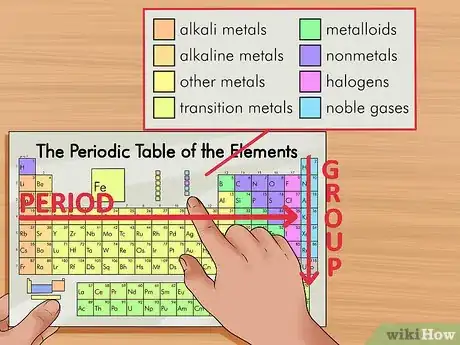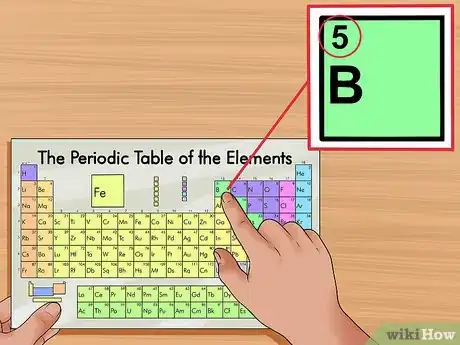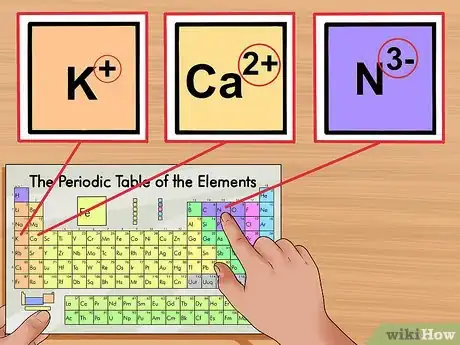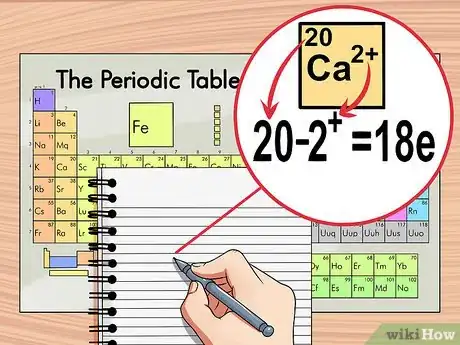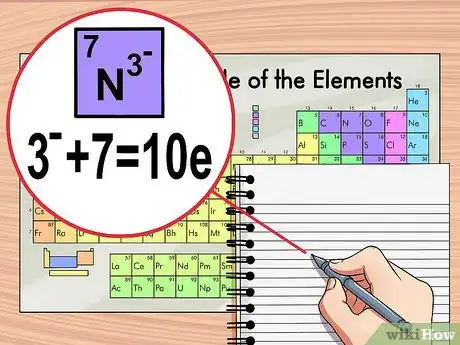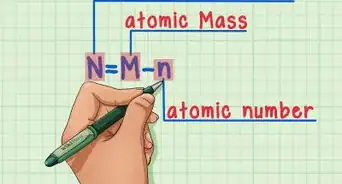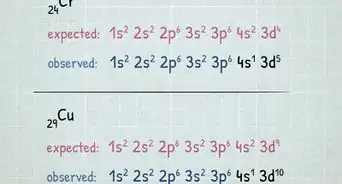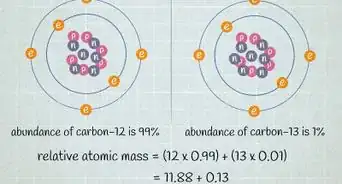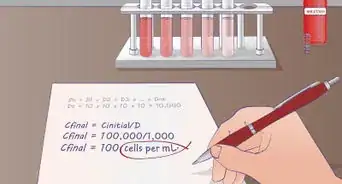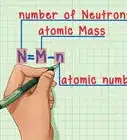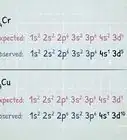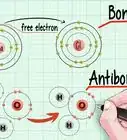This article was co-authored by Bess Ruff, MA. Bess Ruff is a Geography PhD student at Florida State University. She received her MA in Environmental Science and Management from the University of California, Santa Barbara in 2016. She has conducted survey work for marine spatial planning projects in the Caribbean and provided research support as a graduate fellow for the Sustainable Fisheries Group.
This article has been viewed 361,419 times.
All basic elements are made up of electrons, protons, and neutrons. An electron is a negatively charged particle that makes up part of an atom. A fundamental concept in chemistry is the ability to determine how many electrons an atom contains. By using a periodic table of elements, this can easily be determined. Other important concepts involve how to find the number of neutrons and valence electrons (number of electrons in its outermost shell) in an element.
Steps
Determining Electron Number in Neutral Atoms
-
1Obtain a periodic table of elements. This is a color-coded table that organizes all the known elements by atomic structure. Each element has a 1, 2, or 3-letter abbreviation and is listed along with its atomic weight and atomic number.[1]
- Periodic tables can easily be found in chemistry books as well as online.
-
2Find the element in question on the periodic table. The elements are ordered by atomic number and separated into three main groups: metals, non-metals, and metalloids (semi-metals). They are further grouped into families including alkali metals, halogens, and noble gases.[2] Every column of the table is called a group and every row is called a period.
- If you know the details of your element, such as what group or period it is in, it will be easier to locate.
- If you don’t know anything about the element in question, just search the table for its symbol until you find it.
Advertisement -
3Find the atomic number of an element. The atomic number appears in the upper left-hand corner or centrally above the element symbol in the square. The atomic number defines the number of protons present in that particular element.[3] Protons are the particles in an element that provide a positive charge. Because electrons are negatively charged, when an element is in its neutral state, it will have the same number of protons as electrons.
- For instance, boron (B) has an atomic number of 5, meaning that it has 5 protons and 5 electrons.
Determining Electron Number of Positively/Negatively Charged Ions
-
1Identify the charge of the ion. Adding and removing electrons from an atom does not change its identity, but it changes its charge. In these cases, you now have an ion, such as K+, Ca2+, or N3-. Usually, the charge is expressed in a superscript to the right of the atom abbreviation.
- Because an electron has a negative charge, when you add extra electrons, the ion becomes more negative.
- When you remove electrons, the ion becomes more positive.
- For example, N3- has a -3 charge while Ca2+ has a +2 charge.
-
2Subtract the charge from the atomic number if the ion is positive. If the charge is positive, the ion has lost electrons. To determine how many electrons are left, subtract the amount of charge from the atomic number. In this case, there are more protons than electrons.
- For example, Ca2+ has a +2 charge, therefore, it has 2 fewer electrons than a neutral calcium atom. Calcium’s atomic number is 20, therefore this ion has 18 electrons.
-
3Add the charge to the atomic number if the charge is negative. If the charge is negative, the ion has gained electrons. To determine how many total electrons there are, add the amount of charge to the atomic number. In this case, there are fewer protons than electrons.
- For example, N3- has a -3 charge which means it has 3 more electrons than a neutral nitrogen atom. Nitrogen’s atomic number is 7, therefore this ion has 10 electrons.
Community Q&A
-
QuestionWhat if the charge has no number?
 Community AnswerIf the charge has no number (is 0), then the number of electrons is the same as the number of protons.
Community AnswerIf the charge has no number (is 0), then the number of electrons is the same as the number of protons. -
QuestionHow do I calculate the number of electrons by looking at a periodic table?
 Community AnswerIt is the atomic number. However, if it has positive ion, then this electron number will go down (ie +2 charge means two electrons have been lost, so the electron/atomic number will go down by two) and vice versa.
Community AnswerIt is the atomic number. However, if it has positive ion, then this electron number will go down (ie +2 charge means two electrons have been lost, so the electron/atomic number will go down by two) and vice versa. -
QuestionHow do I figure out the number of valence electrons?
 Community AnswerValence electrons are the electrons contained in the outermost shell. If you look at the periodic table and at the period numbers, that is the number of valence electrons. If the number is larger than 10, subtract 10 so you get two valence electrons. Example: Oxygen is in the 16th period. If we subtract 10 from 16, we get 6; therefore, oxygen has six valence electrons.
Community AnswerValence electrons are the electrons contained in the outermost shell. If you look at the periodic table and at the period numbers, that is the number of valence electrons. If the number is larger than 10, subtract 10 so you get two valence electrons. Example: Oxygen is in the 16th period. If we subtract 10 from 16, we get 6; therefore, oxygen has six valence electrons.
References
About This Article
To find the number of electrons an atom has, start by looking up the element you're working with on the periodic table and locating its atomic number, which will be in the upper left-hand corner of the square. Then, identify the charge of the ion, which will be written as a superscript to the right of the element. Finally, subtract the charge from the atomic number if the ion is positive or add the charge to the atomic number if the ion is negative. To learn how to read and use a periodic table, keep reading!
